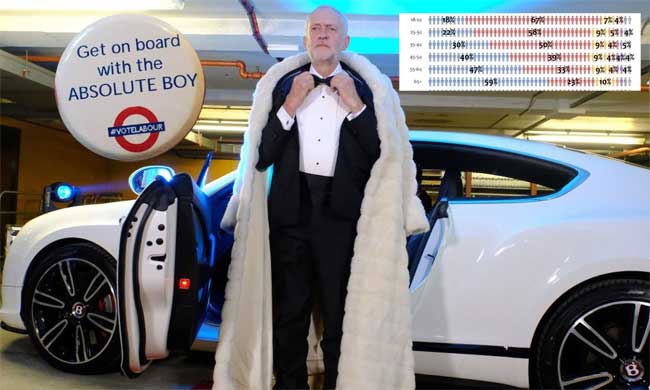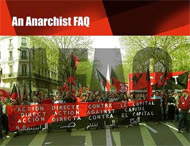Dunkirk - was a 1950s English nationalist retelling inevitable?
Fri, 08/04/2017 - 14:37 — AndrewNFlood Nolan’s Dunkirk amounts to a nostalgic remake of a 1950s WWII film where the brilliant cinematography & immersive sound fails to make up for the nationalist myth making and glorification of war.
Nolan’s Dunkirk amounts to a nostalgic remake of a 1950s WWII film where the brilliant cinematography & immersive sound fails to make up for the nationalist myth making and glorification of war.
I approached it ready to suspend political criticisms in the name of entertainment but found this impossible because both characters and story are weak and one dimensional. The story is only somewhat salvaged by the clever device of the three converging timelines that blend into a single story near the film’s end. So if you see it at all make sure to see the 70mm film on as big a screen as you can because viewed at home on a small screen or laptop the film has nothing to offer.
Absolute boy - The Youth Revolt that led Corbyn to a victory of sorts
Fri, 07/21/2017 - 14:11 — AndrewNFloodCorbyn’s strong showing in the June 2017 UK elections has given a big morale boost to the left. A considerable youth vote, self-mobilising in larger part as a reaction to the ‘me and mine’ selfish society revealed by the Brexit vote seriously set back Tory plans for a fresh wave of Brexit required austerity. Activists used social networking to overcome what had previously been seen as an all powerful smear machine of the billionaire print press. Very few outside the radical left expected this outcome, what drove it and more importantly where can it lead?
[ This is a long read so you can also listen to an audio of the text ]

This piece is not going to answer that in terms of assumptions and assertions but as far as possible through hard numbers. 66% of 18-24 year old’s voted Labour, only a quarter of that, 18% voted Tory [p4]. 27% of those 18-24 year olds said the NHS was the most important issue for them, even though they are least likely to need it [p40]. For the over 65 age group this was flipped, only 23% voted Labour and over twice as many (58%) voted Tory [p4]. In fact, given the way the UK election system works, if only 18-24 year olds had voted, Labour would have been heading for 500 seats. If it had only been those over 65 voting the Tories would have had over 400 seats.
State media outrageously reports 10s of thousands at so called 'March for Life'
Thu, 07/20/2017 - 16:19 — AndrewNFloodSaturday July 1st saw the annual anti-choice parade and yet again RTE (state ran media) reported a grossly inflated figure of the number marching. They headlined it as ‘tens of thousands’ and in the body of the article quoted the organisers claiming 70,000 without further comment, appearing to endorse it. As we are going to show below at the very least that’s a tenfold exaggeration, in fact by our count about 5300 people took part. And while that estimate might be out by 10 or even 20% its physically impossible for it to be out by up to 1500% as that would require ten people too fit into a one meter square space.
We use the same counting methodologies (see below) for almost every demonstration that takes place in Dublin, from huge anti water charges protests to smaller but still significant ones on a huge range of issues. We do these sorts of counts more than a dozen times a year. We don’t always publicise the numbers we reach - organisers always tend to overestimate somewhat, most often guessing a figure that is twice what actually attended. Generally we agree with what the demands of a demonstration are so we don’t want to appear to undermine it by publicly providing real numbers. But we do count, we do use those counts internally in the WSM and we often communicate them directly to organisers.
Rally 4 Choice successfully sees off annual anti-choice parade in Dublin
Thu, 07/20/2017 - 16:14 — AndrewNFloodEvery year in either Dublin or Belfast the pro and anti choice movements come head to head around the so called ‘Rally for Life’. This year it was Dublin’s unwilling role to play host to the bigot parade. It mattered more years than many as a referendum on the hated 8th Amendment that bans abortion is promised for next year. It could be that the next Dublin bigot parade scheduled for 2019 will come after they have suffered a major defeat.
Micropolitics and Microaggressions
Fri, 07/14/2017 - 14:00 — Sidewinder Abstract
Abstract
This text examines the theorisation of microaggressions by Derald Wing Sue in relation to Deleuze and Guattari’s concept of micropolitics. Specifically how micropolitics clarifies a fundamental inconsistency in Sue’s theorisation and how this reflects a confusion between the different dimensions of intentionality and scale. How distinguishing the two can help us apply the concept of microaggressions to scales above the interpersonal such as at institutional, state, societal and international scales. And how doing so clarifies the concept of “institutional racism” introduced in the Macpherson report into the police investigation into the murder of Stephen Lawrence. Finally how the articulation of the concept of microaggressions with normative notions of culpability based on an incompatible traditionalist model of strong intentionality in behaviour, leads to contradictory and detrimental political practices.
- Sidewinder's blog
- Login to post comments
- Read more
Review: Kropotkin and the Anarchist Intellectual Tradition
Thu, 07/06/2017 - 20:49 — AnarchoPeter Kropotkin needs little introduction. The Russian Prince who became one of the leading anarchist thinkers of his time, his articles and books are still – rightly – recommended to those seeking to understand anarchism and have convinced many to join the movement.
Jobstown not Guilty verdict points to a Garda conspiracy
Fri, 06/30/2017 - 16:27 — AndrewNFloodThe outraged media reaction to a jury doing its job and finding the Jobstown defendants not guilty is quite extraordinary. Rather than do the right thing and launch an investigation as to how 180 cops could produce evidence that was directly contradicted by video evidence, the media have gone on a rant against Twitter! Rather than finding it suspicious that nearly 3 million in public funds was spent by the DPP on a case that any proper check of available evidence should have indicated was never likely to convince a jury, the media suggest instead that the problem lay in the exact charges brought. The trial was part of a large scale state operation to suppress a mass anti-austerity community campaign.
As we look across our newspapers, TV channels and radio stations and see what appears to be coordinated messaging from politicos, journalists and other elite figures we should take this as a teaching moment. This isn’t some exception, this is how it works. It’s only visible in this instance because so many of us followed the trial in considerable detail, and that was only possible because of the large number of activists who provided court updates, mostly in a voluntary role. Those activists with access to social media allowed a collective challenging of the media framing. Hundreds of people not only read what they posted but shared and retweeted it.
The pay restoration con the politicans, media and union leaders are trying to impose - Even a decade on its far from full restoration to 2007 levels
Thu, 06/08/2017 - 14:18 — AndrewNFloodDetails of the latest national plan agreed between the government and union leaders have appeared in the media today, as usual well ahead of the union leaders bothering to tell their membership anything. Then union leaders intention is to present workers with a ‘take it or leave it’ choice accompanied by dire warnings that there is no choice.
The deal as expected is pretty rotten and in effect ensures that the pay cuts imposed on public sector workers from 2009 will at least partially be in place for some workers a full decade and a year later in 2020. What’s even worse is that the worse pay and conditions imposed on workers employed after 2012 are being set in stone rather than overturned. This despite it seeming an essential basic demand of a union that workers doing the same work should receive the same pay.
The Alt Left and the "Cultural Turn" as Dolchstosslegende
Fri, 05/19/2017 - 17:00 — SidewinderThe term “alt-left” started out more or less as a joke in the culture wars within the left. Although originally an exonym, there are signs that the term is persisting and has even begun to be tentatively accepted as a badge by some of its targets. Now is a good time, then, to put a brief outline on some of the beliefs and attitudes that lie behind this phenomena.
- Sidewinder's blog
- Login to post comments
- Read more
A great display of solidarity from transport workers as Bus Eireann strikers mount secondary pickets
Mon, 05/08/2017 - 15:22 — AndrewNFloodInter city bus workers in Ireland launched widespread secondary pickets at 4am this morning (31st March). Solidarity from transport workers at the other services picketed meant that most of the country ground to a halt as morning rush hour approached, almost all trains, Dublin bus and light rail services did not operate.

